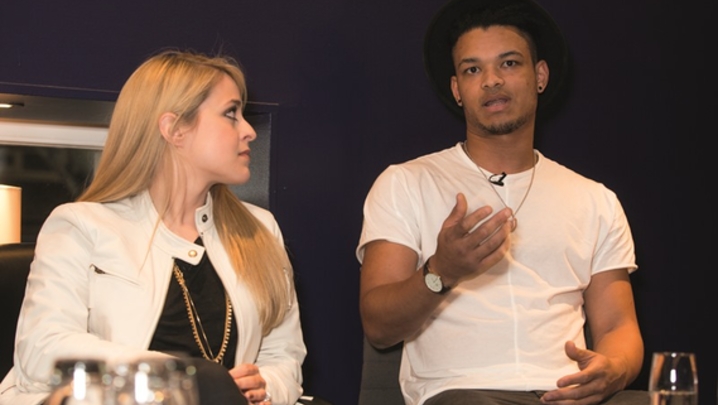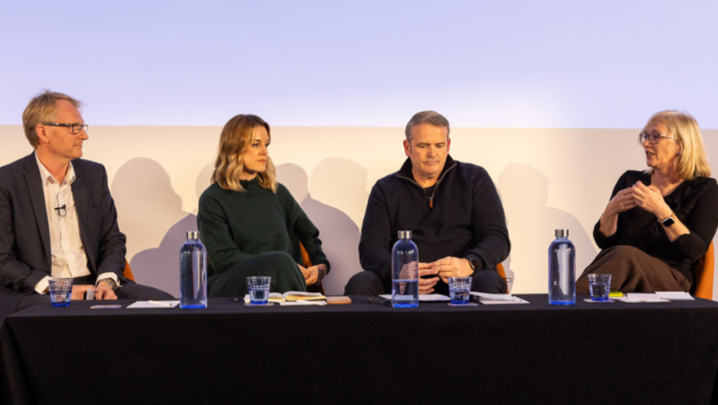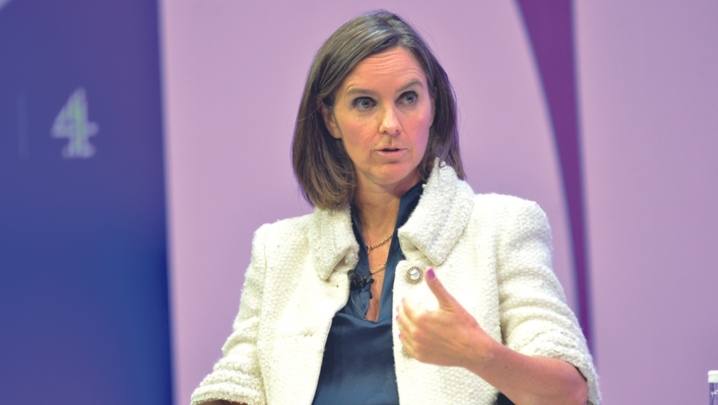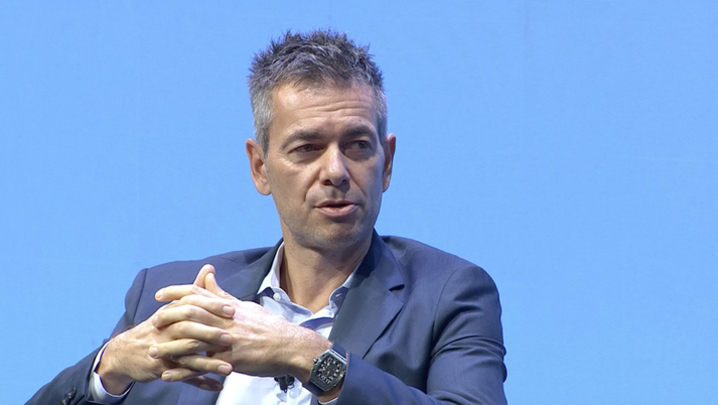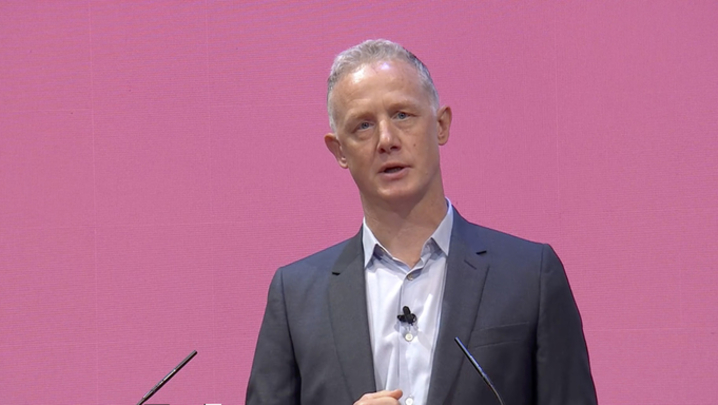Matthew Bell hears a panel of experts warn that the likes of YouTube are generating a tsunami of content for younger viewers
Traditional TV has been on the endangered species list for many years, yet it has fought off every new media predator to threaten it. But has television finally met its match with the rise of online multichannel networks (MCNs)?
“Now is the most exciting time for companies in the online video space,” claimed Rightster chief Ashley MacKenzie at “Beyond YouTube”, a sold-out RTS event in March that debated whether online channels were the future of TV.
“It’s clear that online video is a phenomenon that’s gone beyond just something that’s happening on the internet,” said journalist Kate Bulkley, who chaired the discussion. “The quality is growing. It’s not simply short form and it has certainly gone far beyond the ‘cat-on-skateboard’ videos that were on YouTube before.”
YouTube and Facebook, which between them boast 19 billion daily views worldwide, offer huge platforms to video content producers. And the growth of online video has brought new players, including MCNs, into the marketplace.
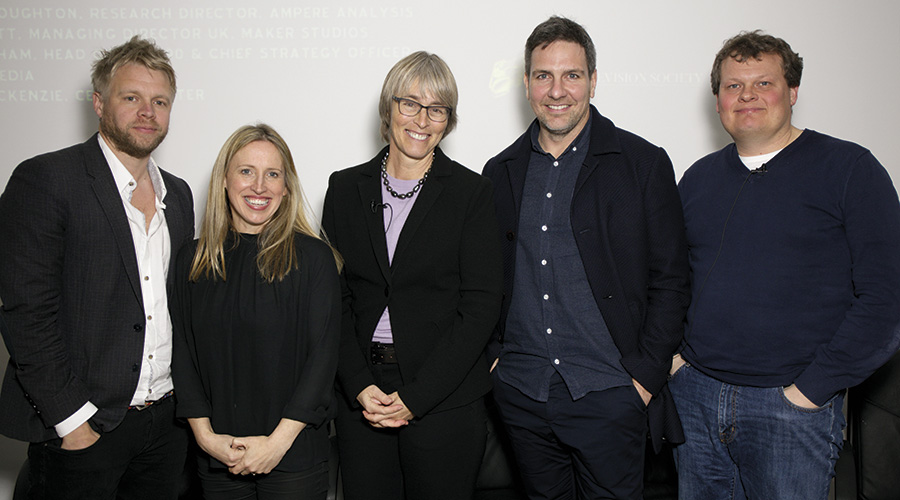
and Ashley MacKenzie (credit: Paul Hampartsoumian)
Two of these MCNs – Rightster and the Disney-owned Maker Studios – were represented on the RTS panel. But there are many others, including music site Vevo, Endemol Beyond and the entertainment MCN Awesomeness TV, which is majority-owned by DreamWorks Animation.
The audience for online video remains youthful, argued MacKenzie. He is a veteran of the MCN business, having founded a video service in 2007 called Base79, which he sold to Rightster two years ago.
“The genuine heavy users remain 10- to 18-year-old kids,” said MacKenzie, who took up the reins as Rightster CEO at the end of last year. “I’m not certain whether that’s going to change massively.”
Pay-TV giant Sky has always been a technological pioneer and its new TV service Sky Q includes an online video section, which pulls together content from many digital creators, including Barcroft Media, Red Bull Media House and GoPro.
Julia Barry, Editorial Director, Sky On-Demand, agreed with MacKenzie that audiences were young, but added that there was an untapped older market. “There’s a real opportunity to grow the reach of this content and bring more eyeballs to it by putting it into our Sky ecosystem and opening up access,” she said.
Barry added: “We think that easy-to-understand curation will help discoverability for a 25-plus audience. We’re going for really simple content categories such as ‘quick laughs’ and ‘food and drink’, which we know our customers will go to.”
James Kirkham moved to Bigballs Media in February to run its global football fans’ channel, Copa90, which he said had an audience “sweet spot of 18 to 25”. He argued that barriers were breaking down between different media. Young audiences saw no difference between “on and offline, between a football management game, watching [football] on TV and watching catch-up”.
"The [online video sector] is where the growth is"
Mobile platforms such as Snapchat, which now has 8 billion daily views, offer MCNs another potential outlet for their content.
“It demonstrates this insatiable appetite that audiences have to connect,” said Dan’l Hewitt, UK Managing Director of Maker Studios.
Traditional television, though, is still relevant in this shiny digital age. Youth brand Vice recently announced that its first European linear-TV channel, Viceland, would launch in September. “It makes absolute sense for Vice to launch TV channels,” insisted Hewitt.
Will bringing Vice’s programming into a television environment change the way its content is viewed? Watching online video, whether on mobile or tablet, tends to be a solitary experience, whereas TV is more communal.
“There is the potential to make online video content more communal in the home, in the sense that you sit down [as a family] and watch it together,” argued Barry.
Branded content is a growing part of the online landscape and, according to the panel, a profitable avenue to explore. Digital video service Red Bull TV, reckoned Kirkham, set the benchmark by “creating sporting events that were the advert in themselves”.
"YouTube is no longer the only horse in this race"
Subscription services, such as the ad-free YouTube Red, which made its US debut at the end of last year, were seen as more of a risk. “It’s a tall ask in the short term,” said MacKenzie, who argued that the youthful consumers of online video would not have the means to pay for such a service.
However, he added that “organisations such as [YouTube] are going to go longer, deeper and harder than anyone else. So it would be a brave person to bet against YouTube.”
Hewitt’s company, Maker Studios, made the reality-adventure series Scare PewDiePie for Red. The Swedish gamer Felix Kjellberg – his online name is PewDiePie – is YouTube’s biggest draw, with more than 43 million subscribers to his channel.
Kirkham reckoned that a subscription service would stand or fall on the quality of its product: “Does it augment your life and make things better? Is it providing you with stuff that is rich, exclusive or new?”
But who beyond YouTube’s top rank of PewDiePie and fashion and beauty vlogger Zoella could make a subscription service pay, asked Bulkley.
“They are mainstream media names that have risen to the top,” answered Kirkham. “There are a huge number with staggering followings [below PewDiePie and Zoella].”
Hewitt reckoned that there was an opportunity to work with up-and-coming online talent. “We have to rethink how we commission and develop new forms of programming with these new types of talent. We have to work with them in a different way; they’re not trained actors – they’ve done it themselves,” he said.
The panellists confessed to feeling their age – most of them were at least a couple of decades older than the typical consumers of their content and services.
“I’m 40,” said Hewitt, “and I [recently] had that experience that I’m sure my mum had a few years ago, where I had to lean over to one of our creators and say: ‘Can you show me what the hell you’ve done on Snapchat because I don’t understand how that works.’”
MacKenzie admitted that it is a world he barely understands. Addressing the audience, he asked: “How many of you really understand why kids watch so much YouTube?
“I’ve been doing this [job] for nearly a decade and I don’t get it. It is staggering, the social change that’s going on.”
'TV has passed its tipping point'
To set the scene for the panel discussion, Ampere Analysis Research Director Richard Broughton outlined the threat that the online multi-channel networks pose to television.
The traditional TV model in western Europe, he explained, had ‘tipped into decline’. Online advertising had already surpassed the value of both public service television and TV ad revenues, with Ampere predicting that it would overtake the revenue of pay-broadcasters before 2020.
The amount and quality of online video is growing, and attracting more advertising. Traditional broadcasters, typically via their online catch-up services, are an important part of this growth but so, too, are the social-video platforms, such as Facebook – which is increasingly focusing on video.
The platform landscape is changing. ‘YouTube is no longer the only horse in this race,’ he said. ‘A few years ago, it was just YouTube, with very small players elsewhere, but social video from Facebook has been rapidly catching up with the other social-media platforms – Twitter and Snapchat – hot on its heels.’
In the past, Broughton explained, MCNs have been squeezed, losing 45% of their ad revenue to the platforms that host their content and much of the rest to the creators of the content.
The solution, he said, was for MCNs to ‘start producing their own content or [build] closer ties to the content creators themselves’, so they ‘no longer need to give away the majority of the revenue that comes through from advertising. A lot of the MCNs have been moving into production.’
Working with brands that want to connect with MCN audiences – including a ‘demographic that has perhaps lost its connection with traditional, commercial broadcast TV’ – would also boost revenues, he argued.
Broughton suggested that the MCNs were in a strong position: ‘They are content creators, they’ve got brand affiliations and they have multiple outlets on which you can view their content.
‘Traditional broadcasters don’t need to be worried about their business any time soon but, if they or their shareholders are looking for growth, the [online video sector] is where the growth is.’
Question & answer
Q.Helen Purvis, Knight Ayton Management: Do you see a time when traditional TV talent will go online?
A.Ashley MacKenzie, Rightster: It’s an inherently different business model.… An independent TV production company goes to a commissioner, the commissioner runs a pilot, gives them a load of money, they make [the show] and hand it back to the channel.
That is entirely different to [online talent]. They spend more time managing their community and responding to comments.…There are tools that allow them to do it in near real time. For them, that is a critical, if not the most important, component of how they build their audience.
Q.Nick Doff, The EPG Shop: How, as an industry, are you working to get a bigger cut of the [YouTube] cake?
A.Ashley MacKenzie, Rightster: It’s always been a 55-45 split [of revenue] in our favour.… I don’t know whether 55% is the right number but it’s not going to move.
A.Dan’l Hewitt, Maker Studios: YouTube is a very important platform and the scale is there.… We don’t have to pay bandwidth costs [or] invest in ad-serving technology: everything is there for us and we’re able to bring in brand partners and sell that advertising.
Q.Kate Bulkley: Brand-funded content is “where the money is”, isn’t it?
A.Dan’l Hewitt, Maker Studios: It’s [about] scaling, yes. Brands are now looking for these “always-on” propositions. So, Coke now has channels, McDonald’s has a channel in the UK, and all these brands are looking for great production partners to help them with storytelling. The opportunities really [are] untapped.
A.James Kirkham, Bigballs Media: YouTube is just part of the puzzle for us. It’s a fantastic part and it’s going to remain, but it’s definitely not the whole picture… brands are a huge part of it, too. We have the likes of Hyundai and Nissan as big-brand partners.
A.Ashley MacKenzie, Rightster: YouTube and Facebook are always going to handle the basic digital ad monetisation – and so they should.… Where companies like ours come in is when those companies fall away. They are not going to make the investment in content creation, because it doesn’t scale. We have a better understanding of the audience online, especially around our content propositions.
Q.Martin Izzard, Red Lorry Yellow Lorry: Where will the growth be in terms of genres and content?
A.James Kirkham, Bigballs Media: We’re most excited about everything outside the 90… minutes [of a match].… We think [football] fans have been forgotten and [so we] have a fan-centric perspective.
A.Julia Barry, Sky: On the Sky platform, we’re finding [that there’s] much more short-form [content], not just in online video but in on-demand video as well. Fanzine content, whether it’s around Game of Thrones or Legends of Tomorrow, people love that stuff.
A.Dan’l Hewitt, Maker Studios: We’re developing dramas for Instagram… in 15-second episodes.
The RTS early-evening event, ‘Beyond YouTube’ was held at the Cavendish Conference Centre in central London on 14 March. The producers were Kate Bulkley and Stephen Gaynor.


